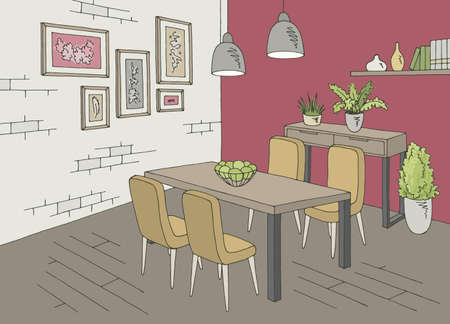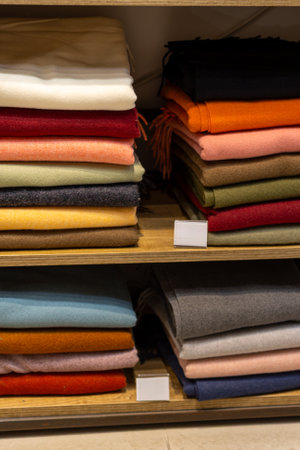Introduction to British Fabric Heritage
Britain’s rich textile history is woven into the very fabric of its culture, from the rugged hills of Scotland to the refined parlours of London. Over centuries, materials like tweed and velvet have transcended their original utilitarian purposes to become powerful symbols of both tradition and modern British style. Tweed, once the practical choice for country pursuits, now graces high-fashion runways, while velvet, long associated with nobility and luxury, continues to add a touch of opulence to contemporary interiors. This enduring legacy is not merely about aesthetics; it speaks to a national appreciation for craftsmanship, comfort, and relaxation. Today, these classic textiles remain at the heart of British identity, blending heritage with evolving tastes and lifestyles.
2. Tweed: The Rugged Emblem of the Countryside
Tweed is synonymous with the rolling hills and brisk air of rural Britain, embodying both practicality and classic style. Originating in the Scottish Highlands during the 19th century, tweed was initially woven by hand from local wool, designed specifically to withstand the harsh climate faced by farmers and landowners. Its dense weave and water-resistant qualities made it the fabric of choice for outdoor pursuits such as hunting, fishing, and walking—activities that remain deeply embedded in British culture today.
The Origins and Evolution of Tweed
The story of tweed begins with its humble roots among Scottish crofters, who crafted the fabric for warmth and durability. Over time, its use spread throughout Britain, gradually becoming a staple not only for function but also for fashion. By the late Victorian era, tweed had become a symbol of country life among the British gentry, who popularised its use in shooting jackets and caps during countryside retreats.
Tweed’s Association with Outdoor Pursuits
Few fabrics are as closely linked to outdoor activities as tweed. Whether stalking deer in Scotland or enjoying leisurely walks through an English estate, tweed has provided comfort and protection across generations. Its connection to these traditional pastimes has cemented its reputation as both practical and prestigious.
Tweed in Fashion and Relaxation Wear
Beyond its functional heritage, tweed has established itself as an icon of British fashion. The fabric’s distinctive patterns—such as herringbone, houndstooth, and windowpane checks—are instantly recognisable. In modern Britain, tweed blazers and trousers have transitioned from country estates to city streets, often worn for their timeless elegance and relaxed sophistication.
| Tweed Pattern | Typical Use | Cultural Significance |
|---|---|---|
| Herringbone | Shooting jackets, blazers | Symbolises tradition and versatility |
| Houndstooth | Capes, skirts | Associated with British equestrian style |
| Windowpane Check | Trousers, waistcoats | Modern twist on classic tailoring |
Tweed’s enduring presence in both casual relaxation wear and formal attire reflects its deep-rooted connection to British identity. Whether donned for a weekend ramble or a smart-casual gathering, tweed continues to offer unmatched comfort and character—a testament to the fabric’s storied past and ever-evolving role in relaxation.

3. Velvet: The Luxurious Touch of British Comfort
Velvet has long been synonymous with British opulence and comfort, weaving its way through centuries of cultural tradition and interior design. Historically, velvet adorned the drawing rooms and grand halls of stately homes, where it was favoured for its plush texture and deep, rich colours that exuded elegance. This fabric became an emblem of sophistication, draping everything from heavy curtains to high-backed armchairs in country estates scattered across the English countryside.
Beyond the grandeur of manor houses, velvet found its place in more intimate settings as well. In the classic British lounge, a velvet sofa or settee offers not only visual warmth but also an inviting softness—a perfect spot for relaxing with a cup of tea or reading the weekend papers. Its tactile appeal enhances the sense of cosiness that is so central to British domestic life, especially during chilly autumn evenings or rainy afternoons.
Today, velvet continues to evolve within modern British interiors. Designers reinterpret this traditional fabric by introducing contemporary colours and patterns, seamlessly blending heritage with innovation. Whether as scatter cushions, upholstered headboards, or statement armchairs, velvet brings a touch of luxury to everyday living spaces without feeling ostentatious. It remains a staple for those seeking both comfort and a nod to classic British style in their homes.
4. Fabric Care and Maintenance: Keeping Tradition Alive
Classic British fabrics like tweed and velvet are renowned for their timeless appeal and comfort, yet they require thoughtful care to ensure they remain a cherished part of your home for years to come. In modern British households, where tradition meets contemporary living, maintaining these fabrics is not only about preserving heritage but also about sustaining everyday relaxation.
Everyday Care Routines
Regular maintenance is key. For tweed, gentle brushing with a soft clothes brush removes dust and prevents matting. Velvet benefits from occasional shaking out and using a velvet brush or steamer to revive its pile. Both fabrics should be kept away from direct sunlight to avoid fading—a common concern in bright conservatories or bay-windowed lounges.
Cleaning Guidelines
| Fabric Type | Cleaning Method | Special Tips |
|---|---|---|
| Tweed | Spot clean with cool water and mild soap; professional dry cleaning for deep cleans | Avoid over-wetting; always air dry flat |
| Velvet | Blot spills gently; professional dry cleaning recommended | Never iron directly—use a steamer on the reverse side |
Storing Classic Fabrics
Proper storage safeguards your textiles from moths and dampness. Store tweed garments or throws in breathable cotton bags with natural moth repellents such as lavender sachets or cedar balls. For velvet cushions or drapes, loosely fold and store them in a cool, dry cupboard to prevent crushing the pile.
Mending and Refreshing
Prompt attention to small snags or loose threads will prevent further damage. British tradition favours invisible mending for tweed, which preserves both durability and character. Velvet may need gentle steaming to remove creases; avoid aggressive brushing that could damage the fibres.
Caring for these quintessentially British fabrics ensures that their beauty and comfort continue to enhance your home’s relaxing spaces—preserving both legacy and luxury for generations to come.
5. Blending Old and New: Modern British Relaxation Spaces
Contemporary British interior design is renowned for its ability to weave classic fabrics such as tweed, velvet, and tartan into the fabric of everyday living spaces, creating an inviting harmony between tradition and modernity. Today’s designers celebrate the deep-rooted heritage of these textiles while adapting them for the demands of 21st-century lifestyles, making relaxation at home a luxurious yet practical affair.
Heritage Fabrics in a Contemporary Setting
Modern British homes often feature soft furnishings and upholstery crafted from historic materials like Harris tweed or plush English velvet. These fabrics bring warmth, durability, and tactile comfort to sofas, armchairs, and window dressings, offering both visual appeal and a sensory invitation to unwind. By reimagining classic patterns in updated palettes—think muted greys, navy blues, or gentle sage greens—designers ensure these traditional textiles seamlessly suit contemporary tastes.
Mixing Materials for Everyday Comfort
The beauty of modern British design lies in its willingness to blend materials old and new. A velvet chaise longue might be paired with linen cushions or set against a backdrop of minimalist painted walls. Such combinations respect the time-honoured craftsmanship behind each fabric while ensuring that spaces remain uncluttered and functional—a key requirement for today’s busy households.
Relaxation Reimagined: Practical Elegance
Classic British fabrics are no longer reserved solely for stately drawing rooms. Instead, they now grace reading nooks, garden rooms, and family lounges throughout the UK. Washable wool throws add both tradition and practicality to sofas; stain-resistant velvets lend a touch of luxury without fear of everyday mishaps. This thoughtful integration of heritage textiles allows modern Britons to relax in style, surrounded by echoes of their cultural past yet free to enjoy all the comforts of present-day living.
6. Conclusion: The Enduring Appeal of British Textiles
As we reflect on the journey from tweed to velvet, it becomes clear why traditional British fabrics continue to hold a special place in our hearts and homes. Their enduring appeal is rooted not only in their physical comfort but also in their deep cultural resonance. For generations, the meticulous craftsmanship behind British textiles has ensured quality, durability, and a sense of timelessness that transcends fleeting trends. Each weave and fibre tells a story—of rural landscapes, city tailors, and the evolution of British style. More than just materials for clothing or interiors, these fabrics represent a bridge between past and present, connecting us with heritage while providing tangible comfort in our everyday lives. Whether it’s the reassuring weight of Harris Tweed on a chilly evening or the sumptuous softness of velvet after a long day, these textiles offer more than relaxation—they offer an embrace of identity and tradition. In choosing classic British fabrics, we are not only seeking comfort but also honouring the artistry and legacy that have shaped Britain’s unique sense of relaxation and home.

